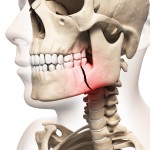
Mandibular fractures are a common facial injury with between 12-40% involving the angle of the mandible.
The main aim of this review was to determine which method for internal fixation using a transoral approach would have the lowest complication rate for patients with Mandibular angle fractures (MAFs).
Methods
Searches were conducted in PubMed, Cochrane Database of Systematic Reviews, the Cochrane Central Register of Controlled Trials, EMBASE, MEDLINE, CINAH, and the Electronic Journal Center. This was supplemented by a manual search of several oral and maxillofacial related journals and a search for on-going trials. randomised or quasi-randomized controlled trials (RCTs), controlled clinical trials (CCTs), or retrospective studies comparing post operative complication of mandibular fixation were considered.
Results
- 20 studies (9 RCTs, 3 CCTs, and 8 retrospective studies) involving a total of 959 patients were included.
- 8 had a low risk of bias, 11 a moderate risk and 1 a high risk of bias.
- 10 studies compared 1 and 2 miniplates a statistically significant difference was found between a single superior border miniplate and the use of 2 miniplates. (OR 0.63, 95% CI 0.48 to 0.83, P = .001) ie a 37% decrease in post operative complications with use of a single plate.
- 5 studies compared a miniplate placed on the external oblique ridge to one placed on the lateral surface of the mandible. For all complications there was a statistically significant superiority for the transbuccal miniplate technique (OR 2.10, 95% CI 1.768 to 2.62, P = .00001)
- 6 studies compared geometric and conventional miniplates. A significant decrease in postoperative complications was seen using geometric miniplates compared to conventional miniplates (OR 0.29, 95% CI 0.16 to 0.55, P = .0001)
Conclusions
The authors concluded
The results of the meta-analysis have shown that the use of 1 miniplate is superior to using 2 in reducing the incidence of postoperative complications in the management of MAFs. In addition, our results showed that the transbuccally placed lateral miniplate was better at reducing the incidence of postoperative complications than one placed on the external oblique ridge using a transoral approach. Finally, geometric miniplates performed better than conventional miniplates in reducing postoperative complications.
Commentary
We recently looked at a review that compared standard and 3D miniplates in the management of MAFs (Dental Elf 25th Apr- 2014) and we have previously reported on a Cochrane review by Nasser et al ( Dental Elf 11th Jul 2013). The current review has employed a detailed search strategy and followed a standard methodology. They have however decided to include CCTs and retrospective studies. As the RCTs had higher quality scores and a reasonable number of them were identified there is a good argument to restrict the review to these studies. Alternatively as a number of meta-analyses were conducted and it may have been interesting to have presented a sensitivity analysis with the analysis restricted to the RCTs to see what impact this would have on their findings
Links
Al-Moraissi EA, Ellis E 3rd. What Method for Management of Unilateral Mandibular Angle Fractures Has the Lowest Rate of Postoperative Complications? A Systematic Review and Meta-Analysis. J Oral Maxillofac Surg. 2014 May 29. pii: S0278-2391(14)00576-X. doi: 10.1016/j.joms.2014.05.023. [Epub ahead of print] Review. PubMed PMID: 25236822.

Don’t miss: Mandibular fractures review finds using a single miniplates reduced postoperative complications http://t.co/qSo5qSGOFo
[…] Dental Elf – 3rd Oct -2014 – Mandibular fractures: review finds that use of a single min… […]